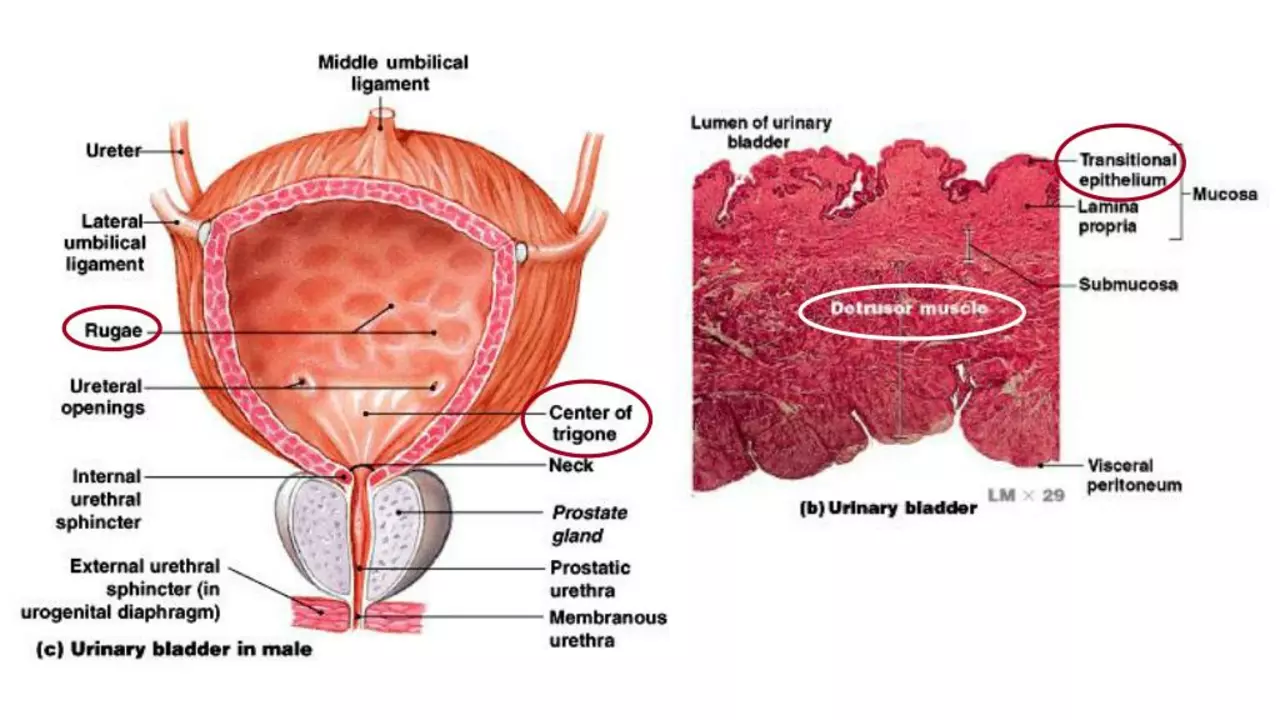Bladder cancer: Symptoms, Diagnosis, and Treatment Options
Seeing blood in your urine is a common first sign of bladder cancer. It can be painless and easy to ignore, but don't. Early checks make a big difference. Bladder cancer starts in the lining of the bladder and often shows symptoms before it spreads. Risk rises with age and smoking, but other factors like chemical exposure, chronic bladder inflammation, and a family history also matter.
Symptoms and when to see a doctor
Besides blood, common symptoms include frequent urination, sudden urges, pain during urination, and lower back pain. These signs can come from infections or stones too, so your doctor will run tests to be sure. If you notice repeated or unexplained symptoms, ask for a urine test and a cystoscopy — a quick camera exam of the bladder. Don't wait for pain; early detection usually means simpler treatment.
Treatment options and what to expect
Treatment depends on stage and grade. Small, early tumors may be removed with a cystoscope during a procedure called transurethral resection. Doctors often use intravesical therapy next — medication placed directly into the bladder to cut recurrence risk. For muscle-invasive disease, surgery to remove part or all of the bladder, chemotherapy, or radiation may be needed. Newer options include immunotherapy and targeted drugs that can help when other treatments don't work.
Recovery and side effects vary. Surgery can change how you urinate and may require a temporary or permanent stoma. Chemotherapy and radiation cause fatigue, nausea, and urinary changes, but doctors manage most side effects with meds and care plans. Ask your team about pelvic floor exercises, diet tips, and ways to handle fatigue.
Follow-up is key. Bladder cancer often comes back, so regular cystoscopies, urine tests, and scans are part of long-term care. Keep a symptom diary and share it at appointments — small changes matter. If you smoke, quitting cuts recurrence risk. Also watch workplace exposures and use protective gear when handling chemicals.
Practical tips: get a second opinion for major decisions, bring someone to appointments, and write questions beforehand. Keep an up-to-date list of medications and allergies. Look for clinical trials if standard treatments don't fit — they can offer access to new drugs. Support groups and rehab programs help with practical and emotional recovery.
If you suspect a problem, call your doctor. Quick action gives you more options and better outcomes. Learning about tests, treatments, and side effects helps you make clear choices with your care team.
Useful resources: ask your doctor for printed info about your exact diagnosis and treatment plan, check national cancer websites for trustworthy guides, and use patient portals to track results. Consider a nurse navigator if available — they keep appointments and tests on schedule. Think about work and insurance early; social workers at hospitals can help with paperwork and benefits. Finally, bring a trusted friend to major appointments and take notes. Small steps like these make the journey easier and help you stay in control. Always ask.

